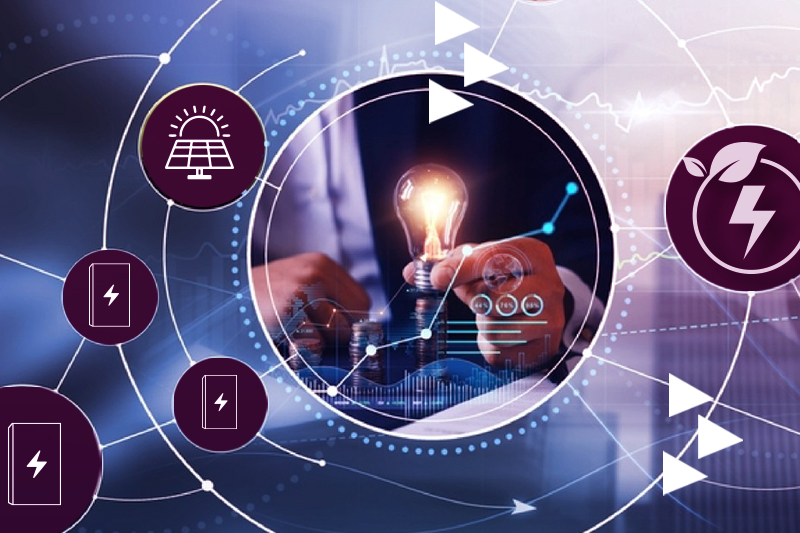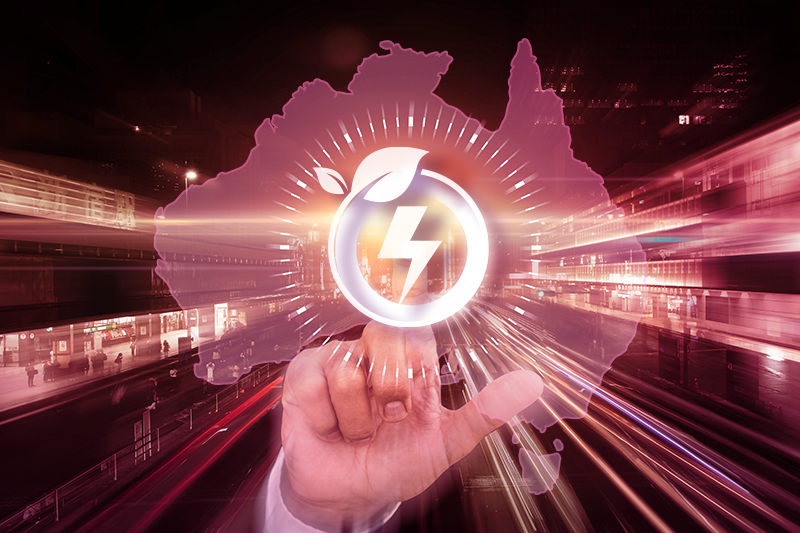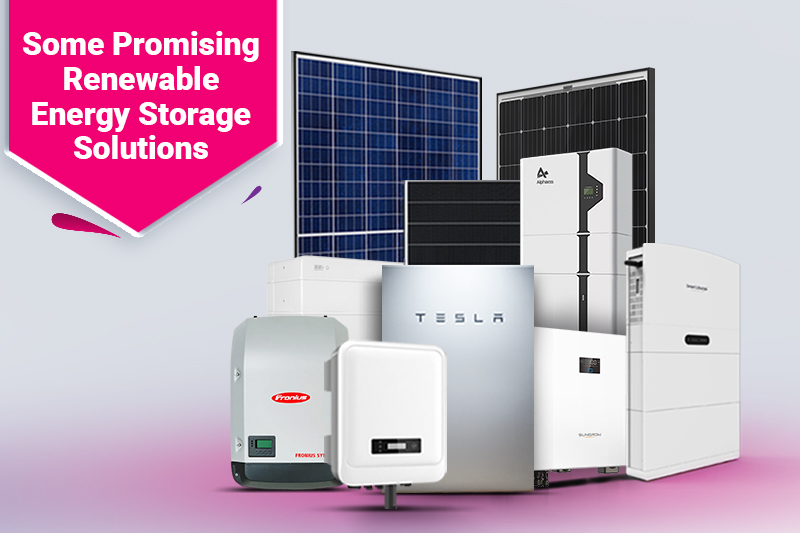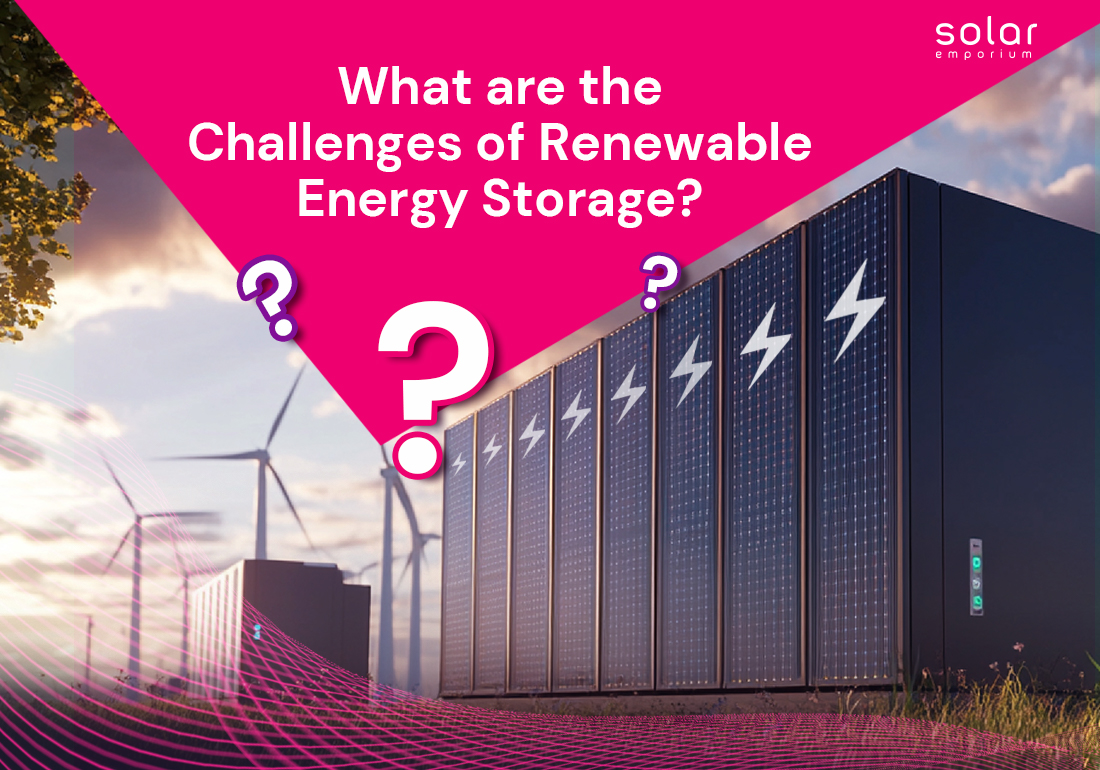While the world struggles with the devastating impacts of global warming and climate change, Australia is stepping up with a bold vision of renewable energy transition for a sustainable future.
Instead of depending on fossil fuels, the nation aims to source 82% of its electricity from clean, renewable energy sources by 2030 and reach net zero by 2050.
This ambitious goal is not just a response to the climate crisis but a testament to Australia’s commitment to leading the charge in renewable energy.
However, even though renewable energy offers boundless rewards creating a cleaner, greener, and more resilient energy landscape, one significant hurdle still remains.
Wondering what? It’s renewable energy storage!
Unlike fossil fuels, renewable energy is intermittent, and its production depends on weather conditions and the time of day. This creates significant challenges in ensuring a stable and reliable energy supply.
So, what are the challenges of renewable energy storage? Let’s explore them and learn how Australia is working to overcome these barriers.
Renewable Energy Storage: The Key to a Sustainable Tomorrow
Renewable energy sources like solar, wind, and hydropower are becoming integral parts of the Australian energy mix.
These sources promise clean, limitless power without any emissions, but there’s a catch: renewable energy is often intermittent.
The sun doesn’t always shine, and the wind doesn’t always blow. This is where renewable energy storage solutions come into play.
So, before moving further, let’s see what renewable energy storage is and why it matters.
Renewable energy storage is a technology that captures energy produced by renewable sources and stores it for later use. This stored energy can be used anytime during grid outages and when electric cost rises with demand.
Now, the question is: Why Renewable Energy Storage is important?
Well, a renewable energy storage system can be beneficial in many ways. It provides reliable, consistent power without depending on harmful fossil fuels. Moreover, storage helps to meet our energy demands, allowing efficient use of electricity.
Energy storage could also be an amazing addition to increase energy security. By integrating battery storage with renewable energy sources, we can ensure grid resiliency and enjoy greater energy independence.
Lastly, power storage helps balance supply and demand and reduces greenhouse gas emissions, aiding in the global transition to clean energy.

Why Storing Renewable Energy Feels Like a Puzzle We Can’t Solve?
While renewable energy storage is a critical piece of the puzzle for a sustainable future, it’s also one of the complex problems to solve.
Energy production with renewables is less predictable. It can fluctuate seasonally and even hourly as local weather changes.
Several factors make renewable energy storage feel like an unsolved puzzle, including intermittency of the renewable sources, initial upfront cost, longevity, efficiency, and energy density.
The main challenge lies in storing large amounts of energy in an efficient and cost-effective way.
For example, a traditional 10kW solar battery can store energy that can power your home for a certain period, roughly 10 to 12 hours at one stretch.
However, they often struggle to provide energy after that certain period as they can’t store huge energy in a small space. Therefore, you ultimately have to rely on other sources for extended power backup.
Many current technologies have a lower energy density, degrade faster, and lose efficiency, making them less competitive than conventional fossil fuel-based systems.
The Biggest Challenges of Renewable Energy Storage: What’s Standing in the Way?
As you have a clear view of renewable energy storage, it is time to know about their challenges.
So, below are the biggest challenges of renewable energy storage that must be addressed to ensure reliable and efficient energy use.

High Cost of Energy Storage Technologies
The initial investment in the current energy storage systems, such as lithium-ion batteries, pumped hydro storage, and other advanced solutions, can be high.
Even though the prices for storage technologies like lithium-ion batteries have decreased in recent years, they require well-built infrastructure, new materials, and innovative technologies, which might be costly to implement on a large scale.
Intermittency of Renewable Energy Sources
As we said earlier, renewable energy generation is intermittent. While renewable sources generate power during optimal conditions, they may not produce enough energy during high demand or unfavorable weather conditions.
So, power generation, storage, and consumption must be managed comprehensively.
Grid Limitations and Infrastructural Issues
Integrating renewable energy storage into existing power grids can be difficult because current grid systems were not designed for large-scale, variable renewable generation.
Suppliers should pay extra attention to power and ensure that stored energy can be effectively distributed when needed.
Also, as renewable power production increases, utilities may need to invest in infrastructures and new transmission lines so that storage systems can respond quickly to fluctuations in demand and generation.
Managing these fluctuations sometimes requires innovative and combined control systems, such as integrating batteries with smart grids.
Environmental Challenges
Many storage technologies, specially manufacturing lithium-ion batteries, require materials such as lithium, cobalt, and nickel.
Mining and processing these materials have significant environmental and social impacts.
Another crucial point is disposing of energy storage systems. To minimize their overall environmental impact, ensure these batteries are recycled safely following environmentally friendly manners.
Limited Storage Capacity and Energy Density
Many energy storage technologies struggle to match the energy density of fossil fuels, making it challenging to store large amounts of energy in a compact form.
For instance, while batteries are efficient for short-duration storage (a few hours), they are not ideal for long-term storage (days or weeks).
Currently, energy storage technologies like lithium-ion batteries and pumped hydro cannot efficiently handle the user’s need for longer power backup.
Scalability and Technological Innovation
Even though the rapid growth of the renewable sector and several storage technological innovations reflect the picture of a promising future, each technology has its own set of benefits and drawbacks.
Many technologies like solid-state solar batteries and hydrogen storage are still being researched or are in the early commercial phase.
So, it may take years to make it widely accessible and cost-effective for Australian residents.
Economic and Financial Hurdles
Transitioning to renewable energy is already a significant financial challenge, but adding energy storage amplifies the burden.
While essential for reliability, the cost of storage technology makes the shift to clean energy even more daunting for many such as people with low incomes.
However, the Australian government offers several solar energy incentives for low-income households to reduce their burden of installing solar panels. This also increases the solar adoption rate in Australia, leading to a sustainable future.
Regulatory and Policy Inconsistency
In many regions or Australian states, there are insufficient government policies and incentives to promote the development and deployment of energy storage technologies.
Their improper regulatory mechanism hampers innovation and investment in storage solutions.
Some Promising Renewable Energy Storage Solutions

Australia is exploring several promising renewable energy storage solutions to support its transition to clean energy.
Some key solutions include building large-scale battery storage, such as lithium-ion and flow batteries, which help balance the intermittent renewable energy sources like solar and wind.
Besides, pumped hydro storage leverages natural landscapes, which offers a significant option for long-duration storage. It works by using surplus energy to pump water uphill to a reservoir. When energy is needed, the water is released to generate electricity.
Green hydrogen is another sector that is gaining traction in Australia. It offers a potential solution for storing excess renewable energy and decarbonizing industries.
These innovations, supported by government investments and private sector partnerships, enhance grid stability and ensure Australia’s sustainable energy future.
How Energy Storage Technology Will Power Australia’s Future?
Australia has all the suitable conditions, making it a prime candidate for renewable energy storage solutions.
However, despite having vast renewable resources, including abundant sunlight and wind like other countries, Australia also faces the challenge of effectively integrating these intermittent energy sources into its grid.
So, does that mean we should continue to depend on fossil fuels? Definitely, no!
Australia is already investing heavily in large-scale and residential energy storage projects to accelerate the energy transition process.
Utility and battery manufacturing companies are deploying huge battery reserves, building smart grids, community solar projects, and wind farms that help to stabilize the grid and ensure uninterrupted power.
However, the government is also exploring innovative solutions and taking significant steps by educating people and running campaigns on the benefits of renewables. They are also offering rebates and incentives to reduce energy storage prices.
For example, in NSW, the government offered $1,600-$2,400 incentives for solar battery installation. The aim is to make solar panels widely available while reducing our carbon footprints and promoting the use of renewable energy sources.
These developing solutions are essential to addressing Australia’s long-term energy needs and helping it to lead the renewable world.
Takeaway Thoughts
Storing renewable or green energy might seem like a hassle at first, but once the initial setup is complete, its long-term benefits feel truly remarkable.
The effort you put into establishing energy storage systems pays off by providing a reliable, sustainable energy source that reduces reliance on traditional power grids.
Over time, it lowers energy costs and contributes to a cleaner environment, making it a wise investment for the future. So, by addressing the obstacles gradually, the country will move closer to its goal of achieving net-zero emissions by 2050.
Contact Solar Emporium to learn more about renewable sources and energy storage.
You can also explore our wide range of solar products, including inverters and batteries, and win a free solar quote.







